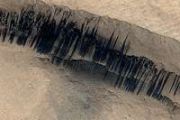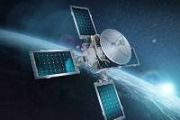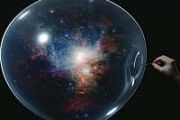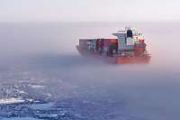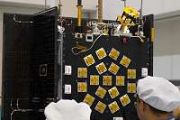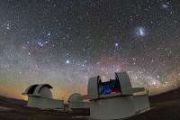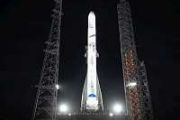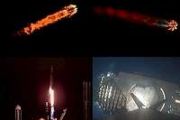
Copernical Team
China to launch up to 3 BeiDou backup satellites in 2023
 China plans to send one to three network backup satellites for the BeiDou Navigation Satellite System (BDS) into space this year to improve the stability and usability of the constellation, according to the 13th China Satellite Navigation Conference on Thursday.
As a national major sci-tech project, the BDS is a global navigation satellite system, constructed and operated independently by
China plans to send one to three network backup satellites for the BeiDou Navigation Satellite System (BDS) into space this year to improve the stability and usability of the constellation, according to the 13th China Satellite Navigation Conference on Thursday.
As a national major sci-tech project, the BDS is a global navigation satellite system, constructed and operated independently by Terran Orbital receives milestone payment for 300 spacecraft with Rivada
 Terran Orbital Corporation (NYSE: LLAP) reports the receipt of a further milestone payment alongside completion of the screening of the industrial partners as well as trade studies that will support the acquisition process and system engineering for the Company's 300 spacecraft, $2.4 billion contract with Rivada Space Networks.
Terran Orbital, through its wholly owned subsidiary Tyvak Nano
Terran Orbital Corporation (NYSE: LLAP) reports the receipt of a further milestone payment alongside completion of the screening of the industrial partners as well as trade studies that will support the acquisition process and system engineering for the Company's 300 spacecraft, $2.4 billion contract with Rivada Space Networks.
Terran Orbital, through its wholly owned subsidiary Tyvak Nano What is the Fluidic Telescope
 The Fluidic Telescope (FLUTE) project team, jointly led by NASA and Technion - Israel Institute of Technology, envisions a way to make huge circular self-healing mirrors in-orbit to further the field of astronomy. Larger telescopes collect more light, and they allow astronomers to peer farther into space and see distant objects in greater detail.
These next-generation large space observato
The Fluidic Telescope (FLUTE) project team, jointly led by NASA and Technion - Israel Institute of Technology, envisions a way to make huge circular self-healing mirrors in-orbit to further the field of astronomy. Larger telescopes collect more light, and they allow astronomers to peer farther into space and see distant objects in greater detail.
These next-generation large space observato Researchers solve ancient mystery of Maya calendar
 The 819-day calendar used by ancient Mayans has long stumped researchers, but anthropologists from Tulane University may have finally deciphered its secrets.
Researchers long suspected the calendar followed astronomical events, specifically how long it takes a planet to appear in the same place in the night sky as seen from Earth, known as the synodic periods of planets. But, according to
The 819-day calendar used by ancient Mayans has long stumped researchers, but anthropologists from Tulane University may have finally deciphered its secrets.
Researchers long suspected the calendar followed astronomical events, specifically how long it takes a planet to appear in the same place in the night sky as seen from Earth, known as the synodic periods of planets. But, according to Most massive touching stars ever found will eventually collide as black holes
 Two massive touching stars in a neighbouring galaxy are on course to become black holes that will eventually crash together, generating waves in the fabric of space-time, according to a new study by researchers at UCL (University College London) and the University of Potsdam.
The study, accepted for publication in the journal Astronomy and Astrophysics, looked at a known binary star (two s
Two massive touching stars in a neighbouring galaxy are on course to become black holes that will eventually crash together, generating waves in the fabric of space-time, according to a new study by researchers at UCL (University College London) and the University of Potsdam.
The study, accepted for publication in the journal Astronomy and Astrophysics, looked at a known binary star (two s Partners extend operation of International Space Station
 The International Space Station partners have committed to extending the operations of this unique platform in low Earth orbit where, for more than 22 years, humans have lived and worked for the benefit of humanity, conducting cutting-edge science and research in microgravity.
The United States, Japan, Canada, and the participating countries of ESA (European Space Agency) have confirmed th
The International Space Station partners have committed to extending the operations of this unique platform in low Earth orbit where, for more than 22 years, humans have lived and worked for the benefit of humanity, conducting cutting-edge science and research in microgravity.
The United States, Japan, Canada, and the participating countries of ESA (European Space Agency) have confirmed th Heavy thunderstorms force SpaceX to delay launch of Falcon Heavy rocket
 Severe weather in Florida forced SpaceX to postpone the launch of its powerful Falcon Heavy rocket on Thursday from NASA's Kennedy Space Center.
The 57-minute launch window was scheduled to begin at 7:29 p.m. However, the area around Kennedy Space Center received severe thunderstorms prior to the launch window's opening and during it. The launch is now planned for Friday evening.
Severe weather in Florida forced SpaceX to postpone the launch of its powerful Falcon Heavy rocket on Thursday from NASA's Kennedy Space Center.
The 57-minute launch window was scheduled to begin at 7:29 p.m. However, the area around Kennedy Space Center received severe thunderstorms prior to the launch window's opening and during it. The launch is now planned for Friday evening. Fish and Wildlife: SpaceX Starship debris covered 350 acres, no wildlife killed
 The U.S. Fish and Wildlife Service documented the fallout from the SpaceX rocket that exploded in the Gulf of Mexico last week, scattering debris into the surrounding area.
The service said "no dead birds or wildlife" or debris from the spacecraft launch were found on lands belonging to the Lower Rio Grande Valley National Wildlife Refuge, stating the greatest impact came in the form of
The U.S. Fish and Wildlife Service documented the fallout from the SpaceX rocket that exploded in the Gulf of Mexico last week, scattering debris into the surrounding area.
The service said "no dead birds or wildlife" or debris from the spacecraft launch were found on lands belonging to the Lower Rio Grande Valley National Wildlife Refuge, stating the greatest impact came in the form of Jupiter Icy Moons Explorer's first taste of science from space
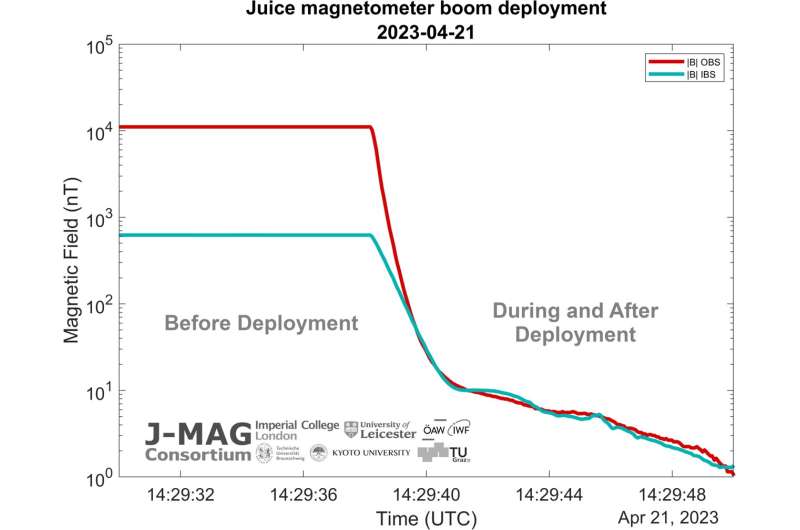
ESA's Jupiter Icy Moons Explorer, Juice, has recorded magnetic field data as its 10.6 m-long magnetometer boom deployed.
Juice launched on 14 April, with deployments and activation of its antennas, booms, sensors and instruments ongoing over the next months in a dedicated check-out period known as the commissioning phase.
The Juice magnetometer boom (J-MAG) was deployed on 21 April, when Juice was about 1.7 million km from Earth.
Data collected by J-MAG captured the moment of deployment itself.
The plot shows the magnitude of the magnetic field from two sensors, as indicated by the red and turquoise lines, before (flat line) and during the deployment (curving lines). The two sensors are mounted on the outer segment of the boom and separated by about 3 m. The labels OBS and IBS indicate the data from the outboard (OBS) and inboard sensors (IBS), respectively. OBS is mounted close to the end of the 10.6 m boom.
The left side of the plot shows the field trace before the boom deployment. The sensors are up against the side of the spacecraft and OBS is located close to two spacecraft thrusters, which are quite magnetic, explaining the difference in the two field magnitudes.
Could you be ESA’s official merchandise supplier?
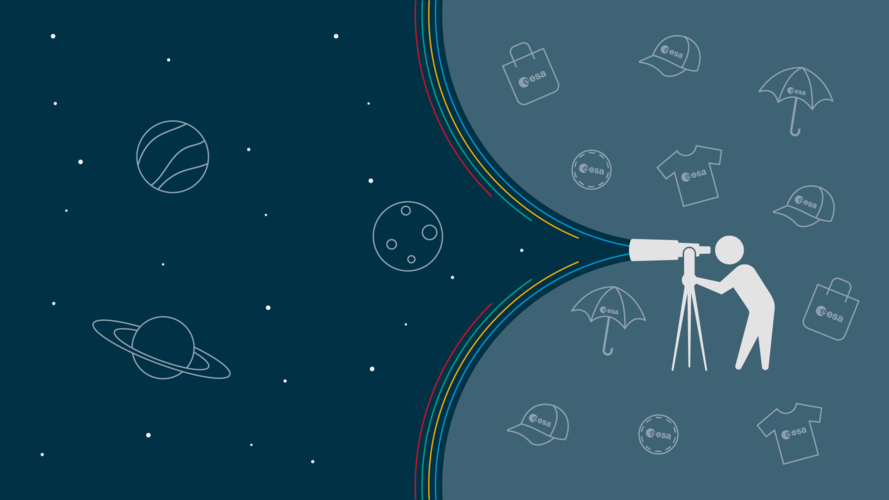
ESA is inviting companies with an interest in merchandising to submit a tender to become the space agency’s official ESA-branded merchandise supplier.














